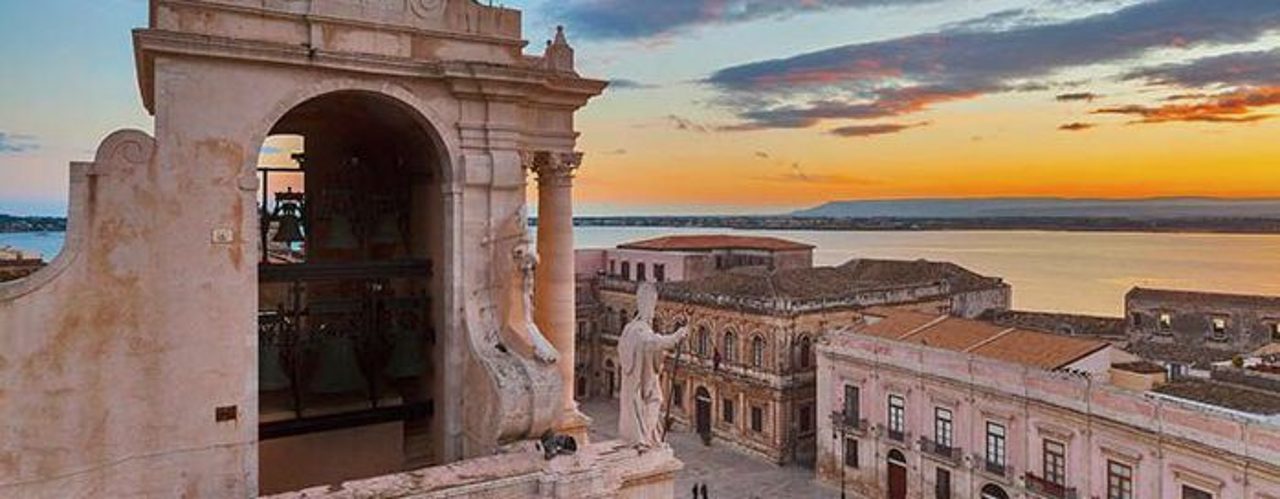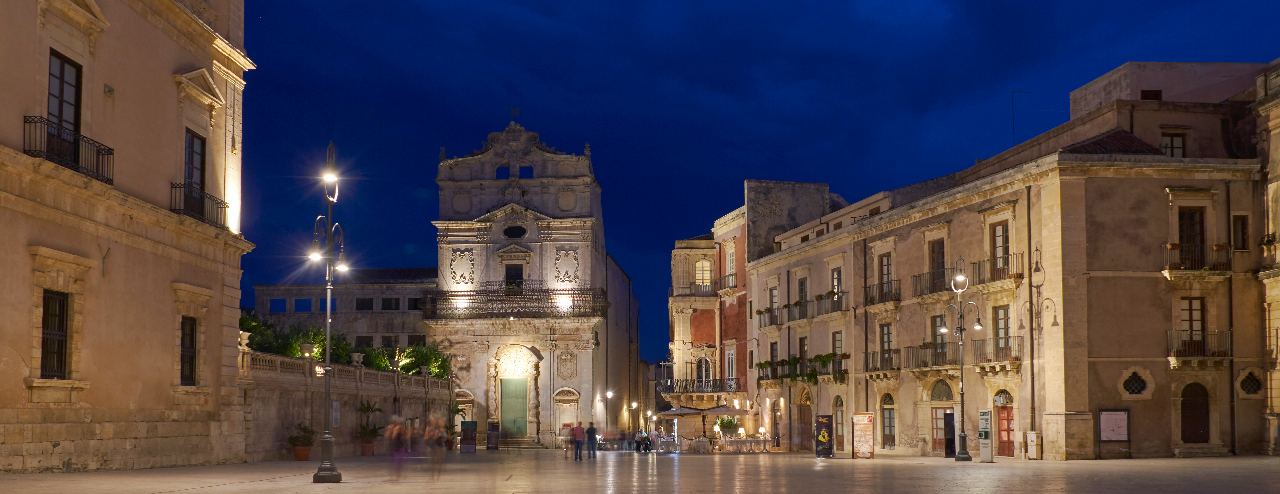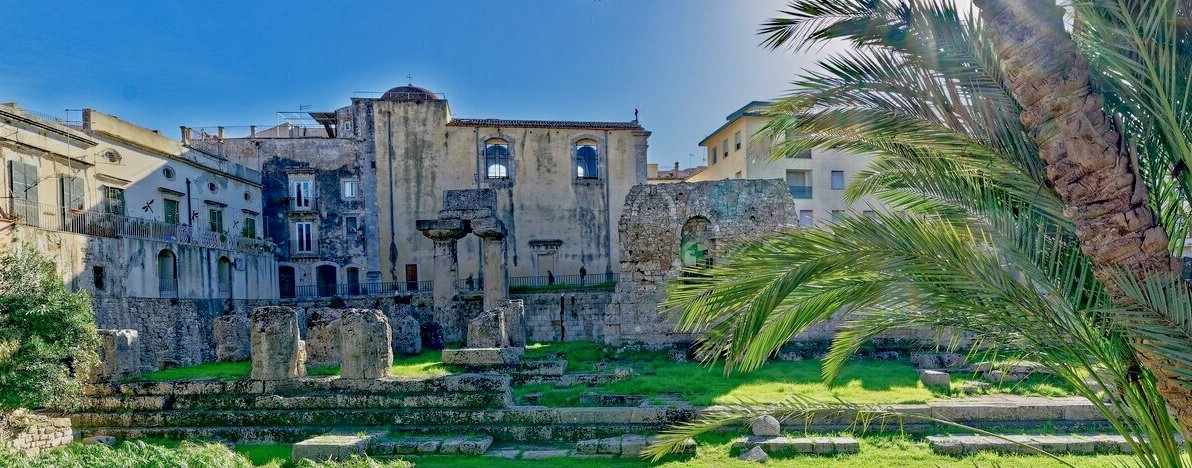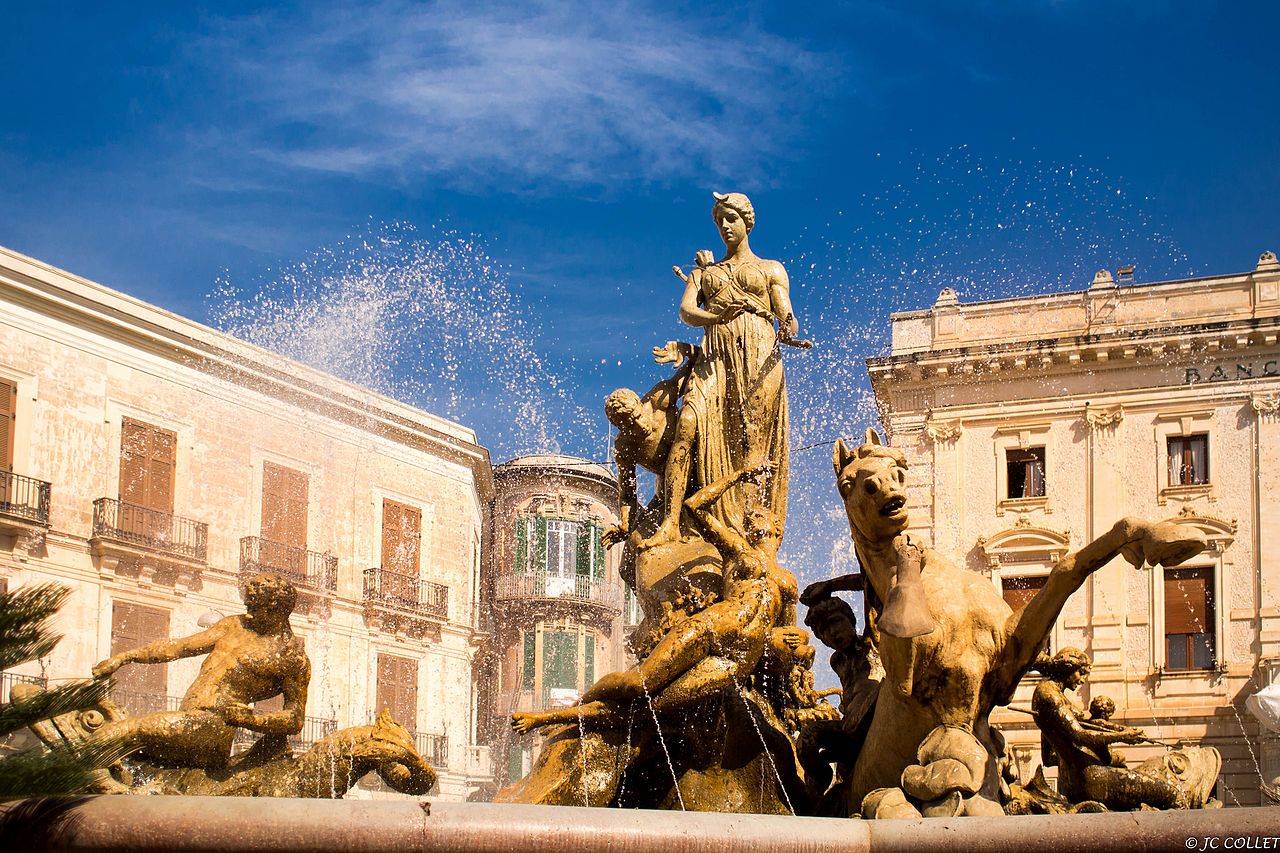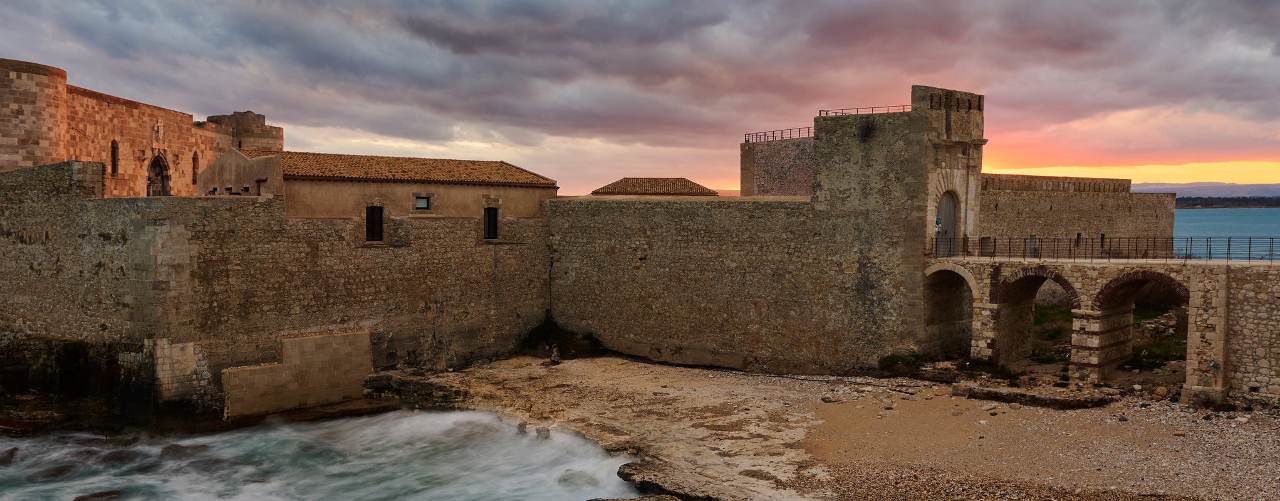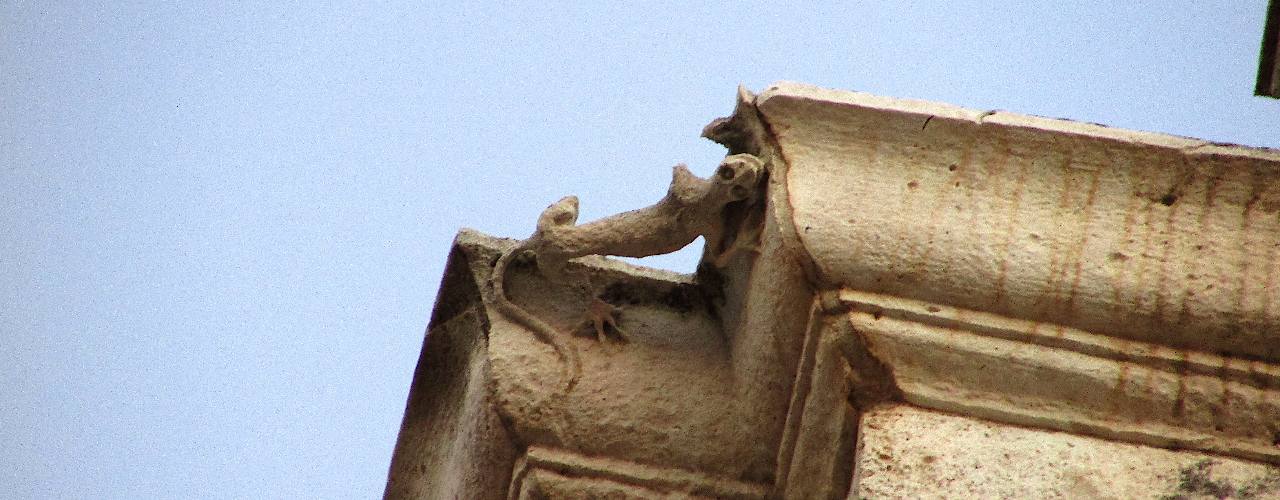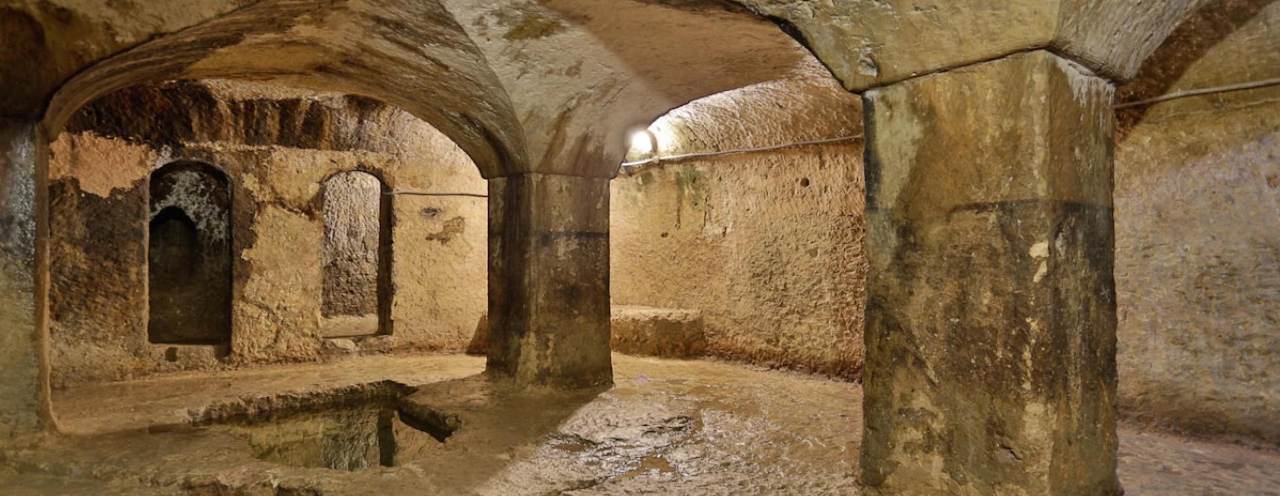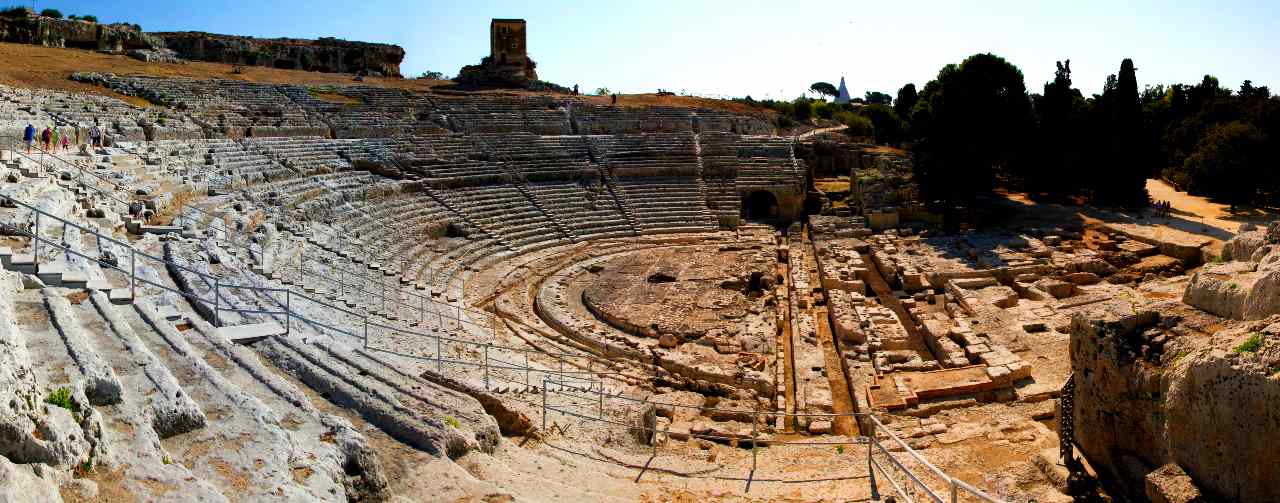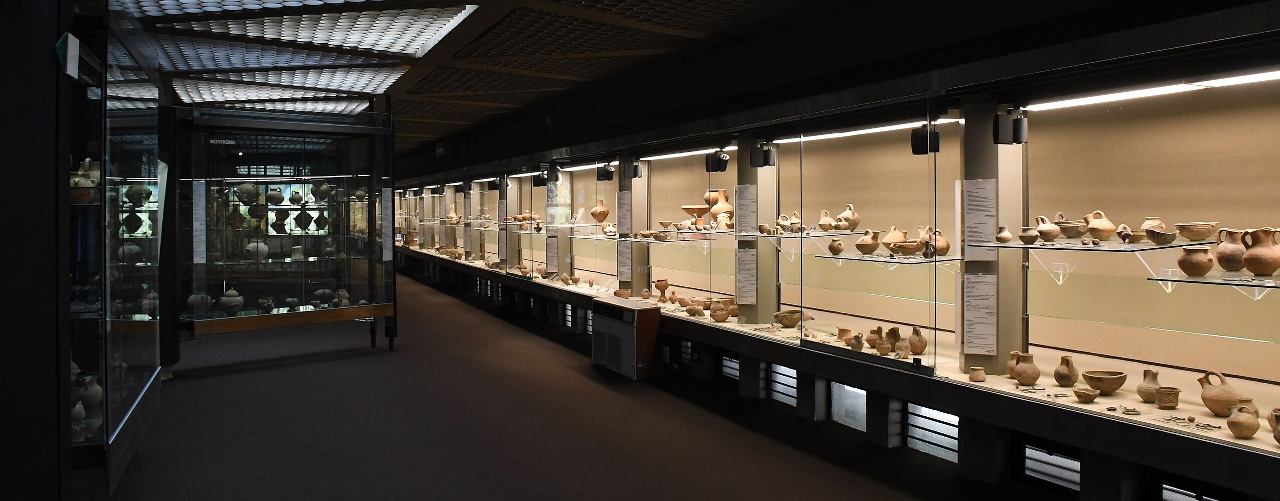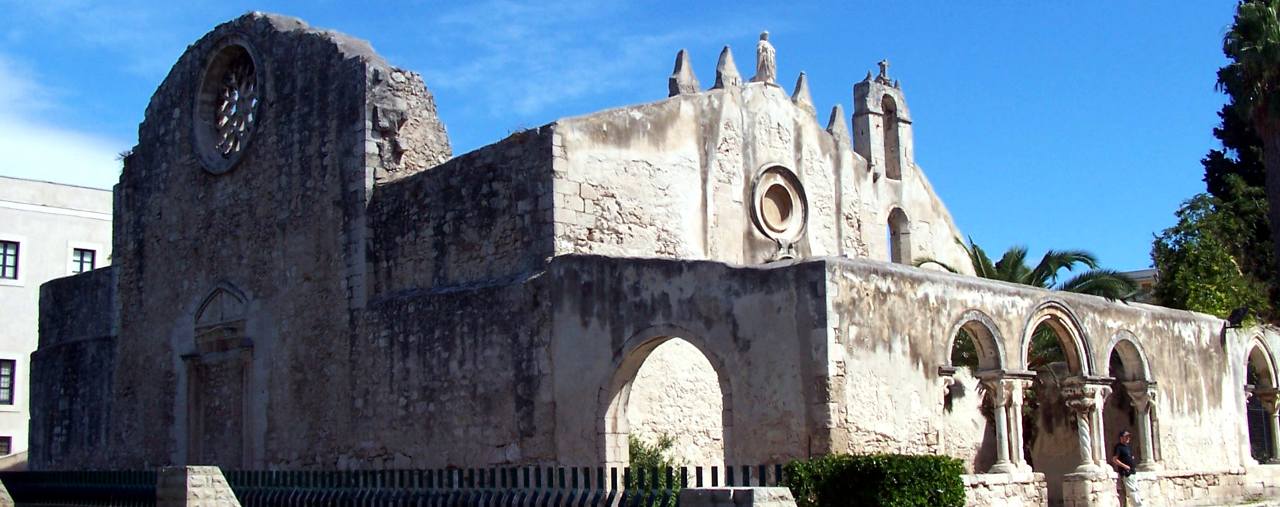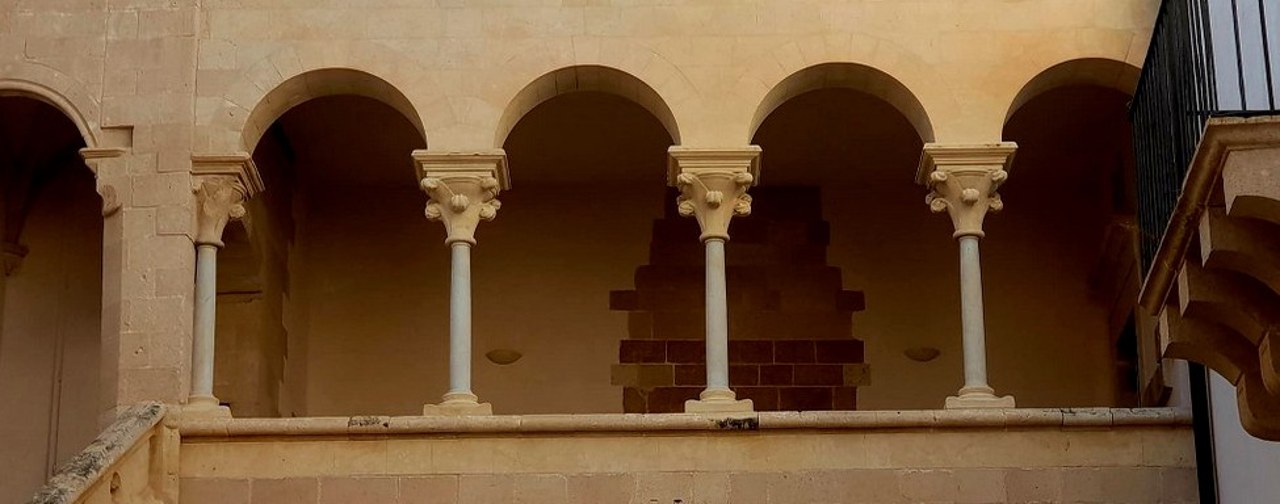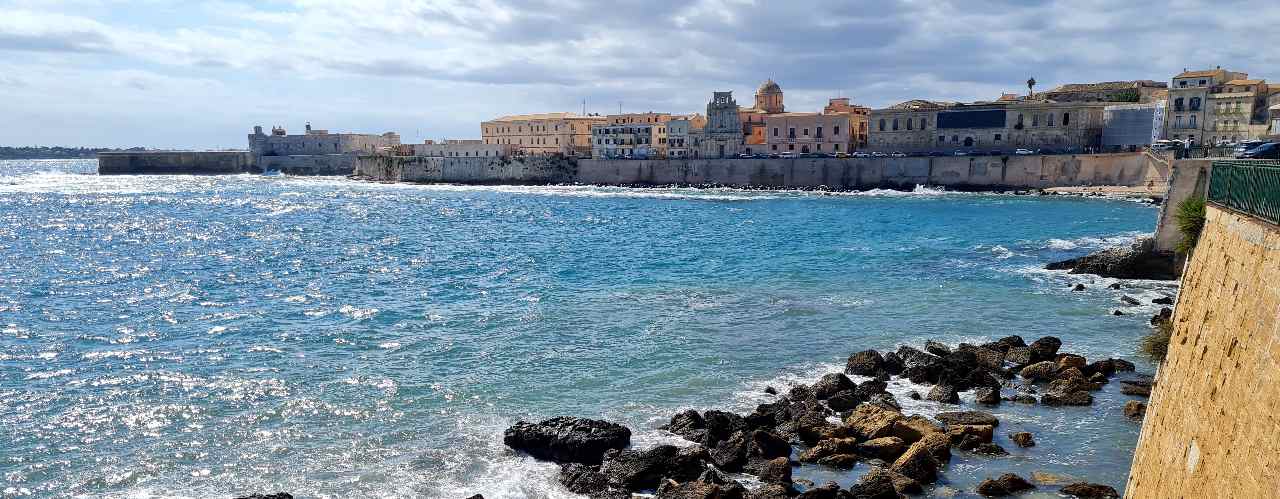La casa del governo e il manifesto civico della Siracusa barocca
Dominando con la sua facciata elegante il lato sud di Piazza Duomo, il Palazzo Vermexio è il più importante edificio civile di Ortigia e la sede storica del potere municipale siracusano. Emblema di autorità e prestigio, esso racchiude quattro secoli di storia amministrativa, custodendo al proprio interno la memoria di assemblee, cerimonie e decisioni che hanno plasmato la vita cittadina. La sua architettura, raffinata e rigorosa, esprime l’equilibrio tipico del barocco siciliano di primo Seicento, un barocco ancora controllato e vicino alle suggestioni rinascimentali.
Origini e committenza
La costruzione del palazzo ebbe inizio nel 1629, quando il Senato di Siracusa decise di dotarsi di una nuova sede che riflettesse il rango della città e la sua autonomia istituzionale. Il progetto fu affidato all’architetto Juan Vermexio, originario della Spagna ma attivo in Sicilia, che disegnò un edificio imponente ma sobrio, coerente con la tradizione architettonica mediterranea. Il luogo prescelto, nella più rappresentativa piazza cittadina, rispondeva alla precisa volontà politica di affiancare il potere civile a quello religioso, incarnato dalla maestosa facciata della Cattedrale di Siracusa.
Architettura e simbologia
La facciata del Palazzo Vermexio, realizzata in pietra calcarea locale, è organizzata su due ordini orizzontali. Il piano terreno, severo e regolare, è scandito da un portale centrale architravato e da aperture simmetriche; il piano superiore, di maggiore leggerezza visiva, si apre in una sequenza di balconi con ringhiere in ferro battuto, sostenuti da mensole scolpite con motivi vegetali e zoomorfi. Un elemento curioso e distintivo è la piccola lucertola scolpita, nascosta tra le modanature inferiori della facciata: secondo la tradizione, rappresenta la “firma” dell’architetto Vermexio, che avrebbe così lasciato un segno personale e riconoscibile della propria opera.
Gli interni conservano ampie sale di rappresentanza, tra cui il Salone di Ricevimento, utilizzato per incontri istituzionali e cerimonie solenni. Qui, soffitti lignei a cassettoni e arredi storici convivono con interventi successivi, testimoniando l’evoluzione funzionale del palazzo attraverso i secoli.
Storia e trasformazioni
Dalla sua inaugurazione, il Palazzo Vermexio divenne il cuore della vita politica e amministrativa di Siracusa. Vi si tenevano le sedute del Senato cittadino, vi si conservavano documenti e sigilli ufficiali, e si organizzavano eventi pubblici destinati a celebrare la città. Il terremoto del 1693, che devastò gran parte della Sicilia sud-orientale, causò danni anche al palazzo, ma l’edificio fu prontamente restaurato, mantenendo inalterata la sua impostazione originaria. Nei secoli successivi, adattamenti e ristrutturazioni hanno aggiornato gli spazi alle esigenze moderne, senza alterarne il carattere storico.
Funzione e vita attuale
Oggi il Palazzo Vermexio è ancora la sede del Comune di Siracusa, ospitando gli uffici della Giunta e del Consiglio comunale. All’interno si conservano opere d’arte e cimeli legati alla storia cittadina, come stemmi, ritratti e antiche pergamene. Periodicamente, alcune sale vengono aperte al pubblico in occasione di mostre, conferenze e manifestazioni culturali, offrendo la possibilità di ammirare da vicino gli ambienti storici e di comprendere il ruolo istituzionale che essi continuano a svolgere.
Visita e atmosfera
Chi si sofferma davanti al Palazzo Vermexio percepisce immediatamente il dialogo architettonico con gli altri edifici che delimitano Piazza Duomo: un equilibrio scenografico in cui il potere civile e quello religioso si fronteggiano simbolicamente, separati ma complementari. Dall’interno, i balconi offrono scorci privilegiati sulla piazza, svelando prospettive che, tra giochi di luce e volumi barocchi, rivelano la grande teatralità urbana di Ortigia. Il palazzo non è soltanto un monumento: è un organismo vivo, dove la storia della città continua a scriversi giorno dopo giorno, sotto lo sguardo immobile della lucertola di pietra che veglia da quasi quattro secoli.
The house of government and the civic manifesto of Baroque Syracuse
Dominating the south side of Piazza Duomo with its elegant facade, Palazzo Vermexio is the most important civil building in Ortigia and the historical seat of Syracusan municipal power. An emblem of authority and prestige, it encapsulates four centuries of administrative history, preserving within it the memory of assemblies, ceremonies, and decisions that have shaped city life. Its refined and rigorous architecture expresses the typical balance of early 17th-century Sicilian Baroque, a style still controlled and close to Renaissance influences.
Origins and patronage
The construction of the palace began in 1629, when the Senate of Syracuse decided to provide itself with a new headquarters that would reflect the city's rank and its institutional autonomy. The project was entrusted to the architect Juan Vermexio, of Spanish origin but active in Sicily, who designed an imposing yet sober building, consistent with the Mediterranean architectural tradition. The chosen location, in the most representative city square, responded to the precise political will to place civil power alongside religious power, embodied by the majestic facade of the Cathedral of Syracuse.
Architecture and symbolism
The facade of Palazzo Vermexio, made of local limestone, is organized on two horizontal levels. The ground floor, severe and regular, is marked by a central architraved portal and symmetrical openings; the upper floor, visually lighter, opens into a sequence of balconies with wrought-iron railings, supported by corbels carved with plant and zoomorphic motifs. A curious and distinctive element is the small carved lizard, hidden among the lower moldings of the facade: according to tradition, it represents the "signature" of the architect Vermexio, who would have thus left a personal and recognizable mark of his work.
The interiors preserve large reception halls, including the Reception Hall, used for institutional meetings and solemn ceremonies. Here, coffered wooden ceilings and historical furnishings coexist with later interventions, testifying to the functional evolution of the palace through the centuries.
History and transformations
Since its inauguration, Palazzo Vermexio became the heart of the political and administrative life of Syracuse. It hosted the sessions of the city Senate, stored official documents and seals, and organized public events to celebrate the city. The earthquake of 1693, which devastated much of southeastern Sicily, also caused damage to the palace, but the building was promptly restored, maintaining its original layout. In the following centuries, adaptations and renovations updated the spaces to modern needs without altering their historical character.
Function and current life
Today, Palazzo Vermexio is still the seat of the Municipality of Syracuse, housing the offices of the executive and the city council. Inside, works of art and memorabilia related to the city's history are preserved, such as coats of arms, portraits, and ancient parchments. Periodically, some rooms are opened to the public for exhibitions, conferences, and cultural events, offering the opportunity to admire the historical environments up close and to understand the institutional role they continue to play.
Visit and atmosphere
Those who pause in front of Palazzo Vermexio immediately perceive the architectural dialogue with the other buildings that line Piazza Duomo: a scenographic balance in which civil and religious power face each other symbolically, separate but complementary. From the inside, the balconies offer privileged views of the square, revealing perspectives that, between plays of light and Baroque volumes, reveal the great urban theatricality of Ortigia. The palace is not just a monument: it is a living organism, where the city's history continues to be written day after day, under the motionless gaze of the stone lizard that has been watching for almost four centuries.
La maison du gouvernement et le manifeste civique de la Syracuse baroque
Dominant avec sa façade élégante le côté sud de la Piazza Duomo, le Palais Vermexio est le plus important édifice civil d'Ortygie et le siège historique du pouvoir municipal de Syracuse. Emblème d'autorité et de prestige, il renferme quatre siècles d'histoire administrative, conservant en son sein la mémoire des assemblées, des cérémonies et des décisions qui ont façonné la vie de la cité. Son architecture, raffinée et rigoureuse, exprime l'équilibre typique du baroque sicilien du début du XVIIe siècle, un baroque encore maîtrisé et proche des suggestions de la Renaissance.
Origines et commande
La construction du palais a commencé en 1629, lorsque le Sénat de Syracuse a décidé de se doter d'un nouveau siège qui refléterait le rang de la ville et son autonomie institutionnelle. Le projet fut confié à l'architecte Juan Vermexio, d'origine espagnole mais actif en Sicile, qui dessina un édifice imposant mais sobre, en accord avec la tradition architecturale méditerranéenne. Le lieu choisi, sur la place la plus représentative de la ville, répondait à la volonté politique précise de juxtaposer le pouvoir civil au pouvoir religieux, incarné par la majestueuse façade de la Cathédrale de Syracuse.
Architecture et symbolisme
La façade du Palais Vermexio, réalisée en pierre calcaire locale, est organisée sur deux ordres horizontaux. Le rez-de-chaussée, sévère et régulier, est rythmé par un portail central architravé et des ouvertures symétriques ; l'étage supérieur, d'une plus grande légèreté visuelle, s'ouvre sur une séquence de balcons avec des balustrades en fer forgé, soutenus par des consoles sculptées de motifs végétaux et zoomorphes. Un élément curieux et distinctif est le petit lézard sculpté, caché parmi les moulures inférieures de la façade : selon la tradition, il représente la « signature » de l'architecte Vermexio, qui aurait ainsi laissé une marque personnelle et reconnaissable de son œuvre.
Les intérieurs conservent de vastes salles de réception, dont le Salon de Réception, utilisé pour les réunions institutionnelles et les cérémonies solennelles. Ici, les plafonds à caissons en bois et le mobilier historique cohabitent avec des interventions ultérieures, témoignant de l'évolution fonctionnelle du palais à travers les siècles.
Histoire et transformations
Dès son inauguration, le Palais Vermexio est devenu le cœur de la vie politique et administrative de Syracuse. Les séances du Sénat de la ville s'y tenaient, les documents et sceaux officiels y étaient conservés, et des événements publics destinés à célébrer la ville y étaient organisés. Le tremblement de terre de 1693, qui a dévasté une grande partie du sud-est de la Sicile, a également endommagé le palais, mais l'édifice a été rapidement restauré, conservant sa structure d'origine. Au cours des siècles suivants, des adaptations et des rénovations ont mis à jour les espaces pour répondre aux besoins modernes, sans altérer leur caractère historique.
Fonction et vie actuelle
Aujourd'hui, le Palais Vermexio est toujours le siège de la Mairie de Syracuse, abritant les bureaux de l'exécutif et du conseil municipal. À l'intérieur sont conservées des œuvres d'art et des souvenirs liés à l'histoire de la ville, tels que des armoiries, des portraits et d'anciens parchemins. Périodiquement, certaines salles sont ouvertes au public à l'occasion d'expositions, de conférences et de manifestations culturelles, offrant la possibilité d'admirer de près les environnements historiques et de comprendre le rôle institutionnel qu'ils continuent de jouer.
Visite et atmosphère
Celui qui s'attarde devant le Palais Vermexio perçoit immédiatement le dialogue architectural avec les autres édifices qui bordent la Piazza Duomo : un équilibre scénographique où le pouvoir civil et le pouvoir religieux se font face symboliquement, séparés mais complémentaires. De l'intérieur, les balcons offrent des vues privilégiées sur la place, révélant des perspectives qui, entre jeux de lumière et volumes baroques, dévoilent la grande théâtralité urbaine d'Ortygie. Le palais n'est pas seulement un monument : c'est un organisme vivant, où l'histoire de la ville continue de s'écrire jour après jour, sous le regard immobile du lézard de pierre qui veille depuis près de quatre siècles.
La casa del gobierno y el manifiesto cívico de la Siracusa barroca
Dominando con su elegante fachada el lado sur de la Piazza Duomo, el Palacio Vermexio es el edificio civil más importante de Ortigia y la sede histórica del poder municipal de Siracusa. Emblema de autoridad y prestigio, encierra cuatro siglos de historia administrativa, custodiando en su interior la memoria de asambleas, ceremonias y decisiones que han moldeado la vida de la ciudad. Su arquitectura, refinada y rigurosa, expresa el equilibrio típico del barroco siciliano de principios del siglo XVII, un barroco todavía controlado y cercano a las sugerencias renacentistas.
Orígenes y encargo
La construcción del palacio comenzó en 1629, cuando el Senado de Siracusa decidió dotarse de una nueva sede que reflejara el rango de la ciudad y su autonomía institucional. El proyecto fue confiado al arquitecto Juan Vermexio, de origen español pero activo en Sicilia, quien diseñó un edificio imponente pero sobrio, coherente con la tradición arquitectónica mediterránea. El lugar elegido, en la plaza más representativa de la ciudad, respondía a la precisa voluntad política de situar el poder civil junto al religioso, encarnado en la majestuosa fachada de la Catedral de Siracusa.
Arquitectura y simbología
La fachada del Palacio Vermexio, realizada en piedra caliza local, se organiza en dos órdenes horizontales. La planta baja, severa y regular, está marcada por un portal central adintelado y aberturas simétricas; la planta superior, de mayor ligereza visual, se abre en una secuencia de balcones con barandillas de hierro forjado, sostenidos por ménsulas esculpidas con motivos vegetales y zoomorfos. Un elemento curioso y distintivo es la pequeña lagartija esculpida, escondida entre las molduras inferiores de la fachada: según la tradición, representa la "firma" del arquitecto Vermexio, que habría dejado así una marca personal y reconocible de su obra.
Los interiores conservan amplias salas de representación, entre ellas el Salón de Recepción, utilizado para reuniones institucionales y ceremonias solemnes. Aquí, los techos de madera artesonados y el mobiliario histórico conviven con intervenciones posteriores, testimoniando la evolución funcional del palacio a través de los siglos.
Historia y transformaciones
Desde su inauguración, el Palacio Vermexio se convirtió en el corazón de la vida política y administrativa de Siracusa. En él se celebraban las sesiones del Senado de la ciudad, se conservaban documentos y sellos oficiales, y se organizaban eventos públicos para celebrar la ciudad. El terremoto de 1693, que devastó gran parte del sureste de Sicilia, también causó daños al palacio, pero el edificio fue restaurado rápidamente, manteniendo inalterada su estructura original. En los siglos siguientes, adaptaciones y remodelaciones actualizaron los espacios a las necesidades modernas, sin alterar su carácter histórico.
Función y vida actual
Hoy, el Palacio Vermexio sigue siendo la sede del Ayuntamiento de Siracusa, albergando las oficinas del gobierno y del consejo municipal. En su interior se conservan obras de arte y reliquias relacionadas con la historia de la ciudad, como escudos, retratos y pergaminos antiguos. Periódicamente, algunas salas se abren al público con motivo de exposiciones, conferencias y eventos culturales, ofreciendo la oportunidad de admirar de cerca los ambientes históricos y comprender el papel institucional que siguen desempeñando.
Visita y atmósfera
Quien se detiene frente al Palacio Vermexio percibe inmediatamente el diálogo arquitectónico con los demás edificios que delimitan la Piazza Duomo: un equilibrio escenográfico en el que el poder civil y el religioso se enfrentan simbólicamente, separados pero complementarios. Desde el interior, los balcones ofrecen vistas privilegiadas de la plaza, revelando perspectivas que, entre juegos de luces y volúmenes barrocos, revelan la gran teatralidad urbana de Ortigia. El palacio no es solo un monumento: es un organismo vivo, donde la historia de la ciudad continúa escribiéndose día a día, bajo la mirada inmóvil de la lagartija de piedra que vigila desde hace casi cuatro siglos.
Das Haus der Regierung und das bürgerliche Manifest des barocken Syrakus
Mit seiner eleganten Fassade, die die Südseite der Piazza Duomo dominiert, ist der Palazzo Vermexio das wichtigste zivile Gebäude in Ortygia und der historische Sitz der städtischen Macht von Syrakus. Als Wahrzeichen von Autorität und Prestige birgt er vier Jahrhunderte Verwaltungsgeschichte und bewahrt in seinem Inneren die Erinnerung an Versammlungen, Zeremonien und Entscheidungen, die das städtische Leben geprägt haben. Seine raffinierte und strenge Architektur drückt das typische Gleichgewicht des sizilianischen Barocks des frühen 17. Jahrhunderts aus, ein noch kontrollierter Barock, der den Anregungen der Renaissance nahesteht.
Ursprünge und Auftraggeber
Der Bau des Palastes begann 1629, als der Senat von Syrakus beschloss, sich einen neuen Sitz zu geben, der den Rang der Stadt und ihre institutionelle Autonomie widerspiegeln sollte. Das Projekt wurde dem Architekten Juan Vermexio anvertraut, der aus Spanien stammte, aber in Sizilien tätig war. Er entwarf ein imposantes, aber schlichtes Gebäude, das mit der mediterranen Architekturtradition im Einklang stand. Der gewählte Standort auf dem repräsentativsten Platz der Stadt entsprach dem genauen politischen Willen, die zivile Macht neben die religiöse zu stellen, die durch die majestätische Fassade der Kathedrale von Syrakus verkörpert wird.
Architektur und Symbolik
Die Fassade des Palazzo Vermexio aus lokalem Kalkstein ist in zwei horizontalen Ordnungen organisiert. Das strenge und regelmäßige Erdgeschoss wird durch ein zentrales Architravportal und symmetrische Öffnungen gegliedert; das optisch leichtere Obergeschoss öffnet sich in eine Folge von Balkonen mit schmiedeeisernen Geländern, die von Konsolen mit pflanzlichen und zoomorphen Motiven getragen werden. Ein kurioses und unverwechselbares Element ist die kleine gemeißelte Eidechse, die zwischen den unteren Gesimsen der Fassade versteckt ist: Der Überlieferung nach stellt sie die „Unterschrift“ des Architekten Vermexio dar, der so ein persönliches und erkennbares Zeichen seines Werks hinterlassen hätte.
Die Innenräume bewahren große Repräsentationssäle, darunter den Empfangssaal, der für institutionelle Treffen und feierliche Zeremonien genutzt wird. Hier koexistieren hölzerne Kassettendecken und historische Möbel mit späteren Eingriffen, die von der funktionalen Entwicklung des Palastes im Laufe der Jahrhunderte zeugen.
Geschichte und Transformationen
Seit seiner Einweihung wurde der Palazzo Vermexio zum Herzen des politischen und administrativen Lebens von Syrakus. Hier fanden die Sitzungen des Stadtsenats statt, offizielle Dokumente und Siegel wurden aufbewahrt und öffentliche Veranstaltungen zur Feier der Stadt organisiert. Das Erdbeben von 1693, das einen Großteil Südostsiziliens verwüstete, verursachte auch Schäden am Palast, aber das Gebäude wurde umgehend restauriert und behielt seine ursprüngliche Struktur bei. In den folgenden Jahrhunderten haben Anpassungen und Renovierungen die Räume an die modernen Bedürfnisse angepasst, ohne ihren historischen Charakter zu verändern.
Funktion und heutiges Leben
Heute ist der Palazzo Vermexio immer noch der Sitz der Gemeinde Syrakus und beherbergt die Büros der Stadtregierung und des Stadtrats. Im Inneren werden Kunstwerke und Erinnerungsstücke zur Stadtgeschichte aufbewahrt, wie Wappen, Porträts und alte Pergamente. In regelmäßigen Abständen werden einige Säle anlässlich von Ausstellungen, Konferenzen und kulturellen Veranstaltungen für die Öffentlichkeit zugänglich gemacht, was die Möglichkeit bietet, die historischen Räume aus nächster Nähe zu bewundern und die institutionelle Rolle zu verstehen, die sie weiterhin spielen.
Besuch und Atmosphäre
Wer vor dem Palazzo Vermexio verweilt, nimmt sofort den architektonischen Dialog mit den anderen Gebäuden wahr, die die Piazza Duomo begrenzen: ein szenografisches Gleichgewicht, in dem sich zivile und religiöse Macht symbolisch gegenüberstehen, getrennt, aber komplementär. Von innen bieten die Balkone privilegierte Ausblicke auf den Platz und enthüllen Perspektiven, die zwischen Lichtspielen und barocken Volumen die große städtische Theatralik von Ortygia offenbaren. Der Palast ist nicht nur ein Denkmal: Er ist ein lebendiger Organismus, in dem die Geschichte der Stadt Tag für Tag weitergeschrieben wird, unter dem unbeweglichen Blick der Steineidechse, die seit fast vier Jahrhunderten wacht.
